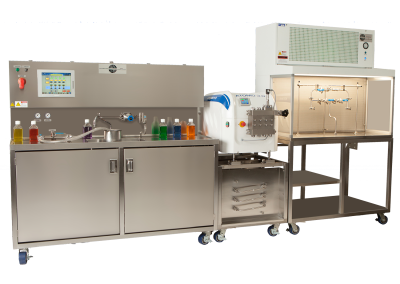The art and science of milk pasteurization have been pivotal in ensuring the safety and quality of milk for over a century. This process, which involves heating milk to specific temperatures to kill harmful bacteria, is essential for both large-scale dairy operations and small-scale producers. For those using a small scale milk pasteurizer, understanding temperature control is crucial for achieving optimal results. Whether you are a small dairy farmer, a hobbyist, or someone interested in producing safe milk products at home, mastering temperature control in pasteurization can significantly impact the quality and safety of your milk.
The Importance of Temperature Control in Milk Pasteurization
Temperature control is the cornerstone of effective milk pasteurization. The primary goal of pasteurization is to eliminate pathogenic microorganisms that can cause diseases such as tuberculosis, brucellosis, diphtheria, and more. Additionally, pasteurization extends the shelf life of milk by reducing the number of spoilage organisms.
In a small scale milk pasteurizer, precise temperature control ensures that milk is heated to the right temperature for the appropriate amount of time. Too low a temperature may not effectively kill all harmful bacteria, while too high a temperature can alter the taste and nutritional content of the milk. The two main types of pasteurization methods used are:
- Low-Temperature Long-Time (LTLT) Pasteurization: This involves heating milk to 63°C (145°F) for at least 30 minutes.
- High-Temperature Short-Time (HTST) Pasteurization: This involves heating milk to 72°C (161°F) for at least 15 seconds.
Both methods are effective, but the choice depends on the equipment available and the desired throughput.
Choosing the Right Small Scale Milk Pasteurizer
Selecting the right milk pasteurizer is critical for achieving precise temperature control. Modern pasteurizers come with various features that facilitate accurate temperature regulation, including:
- Digital Temperature Controllers: These allow for precise setting and monitoring of temperatures, ensuring that the milk reaches the necessary heat level without exceeding it.
- Automatic Shutoff Mechanisms: These features can prevent overheating and ensure that the milk is not exposed to excessive heat for too long.
- Built-in Agitators: These ensure even heating by constantly stirring the milk, preventing hot spots and ensuring uniform pasteurization.
When choosing a milk pasteurizer, consider the volume of milk you need to process, the available features, and the ease of use. Investing in a high-quality pasteurizer with reliable temperature control mechanisms is essential for small-scale producers aiming for consistency and safety in their milk products.
Steps for Effective Temperature Control
To ensure effective temperature control in your small scale milk pasteurizer, follow these steps:
- Pre-Heating: Start by pre-heating your pasteurizer to the desired temperature before adding the milk. This helps in achieving a consistent starting point for pasteurization.
- Monitoring: Use a digital thermometer to monitor the milk’s temperature continuously. Many modern pasteurizers come with built-in temperature displays that make this task easier.
- Stirring: Regularly stir the milk to ensure even heating. Some pasteurizers have built-in agitators that handle this automatically.
- Maintaining Temperature: Once the milk reaches the target temperature, maintain it for the required duration (30 minutes for LTLT and 15 seconds for HTST). Use the pasteurizer’s control features to keep the temperature steady.
- Cooling: After pasteurization, rapidly cool the milk to below 5°C (41°F) to prevent the growth of any remaining bacteria. This step is crucial for maintaining the milk’s quality and safety.
Common Challenges and Solutions
While using a small scale milk pasteurizer offers many advantages, it also comes with potential challenges that can affect temperature control. Here are some common issues and their solutions:
- Inconsistent Heating: This can be caused by uneven heat distribution or equipment malfunction. Ensure that your pasteurizer’s agitator is functioning correctly and consider regularly calibrating the temperature sensors.
- Overheating: If the milk overheats, it can alter the taste and degrade nutrients. Utilize automatic shutoff features and closely monitor temperatures to prevent this.
- Power Fluctuations: Inconsistent power supply can affect the pasteurizer’s performance. Using a voltage stabilizer can help maintain consistent operation.
Benefits of Proper Temperature Control
Maintaining proper temperature control offers numerous benefits:
- Enhanced Safety: Proper pasteurization effectively kills harmful bacteria, making the milk safe for consumption.
- Improved Quality: Correct temperature control preserves the milk’s taste, texture, and nutritional value.
- Extended Shelf Life: Pasteurization slows down spoilage, allowing milk to stay fresh longer.
- Consistency: Achieving precise temperature control ensures that each batch of milk is processed uniformly, leading to consistent product quality.
Best Practices
Understanding and mastering temperature control is fundamental to the successful operation of a small scale milk pasteurizer. By choosing the right equipment, following best practices for temperature regulation, and addressing common challenges, small-scale producers can ensure their milk is safe, high-quality, and delicious. Whether you’re a small dairy farmer or a home producer, investing in knowledge and equipment for effective milk pasteurization will pay off in the quality and safety of your milk products.




